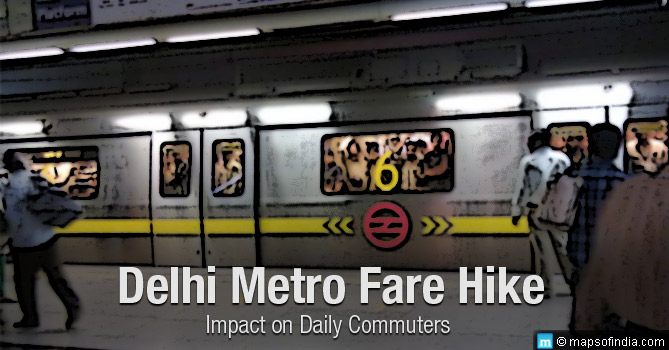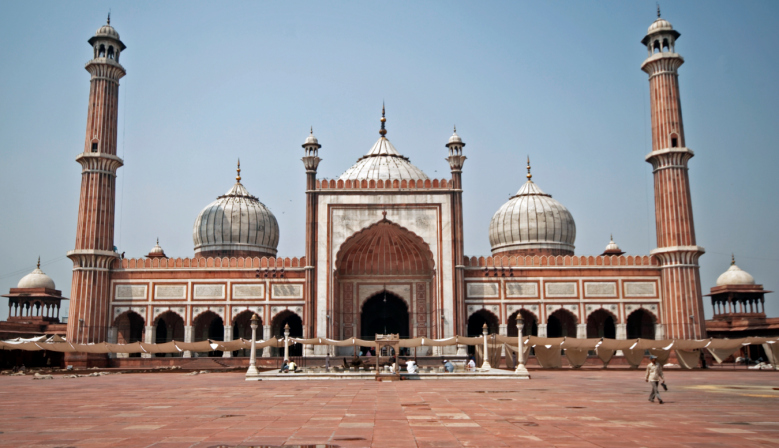Delhi Metro is the lifeline of Delhiwallahs. With its smooth feasibility and providing people relief from the noise of horns, smoke, and queues of vehicles on the road, Dil-wallon-ki Dilli prefers Delhi Metro over any mode of transport. Lakhs of people travel daily by the Delhi Metro in order to reach their workplace or colleges, universities etc. Amidst criticism from not only the common commuters but Government of Delhi as well, fares for Delhi Metro increase from today i.e. October 10, 2017. Fare Fixation Committee (FFC) set up by the Central Government has recommended this revision in fares.
Delhi Metro Rail Corporation (DMRC) was incorporated in 1995 and in 2002 the first section of the Red Line was opened. Since then Metro has been giving joyful, comfortable rides and has become the first choice for the capital city of Delhi. Travelling across the length and breadth of the capital city has become so convenient with the inception of Delhi Metro.
Citing economic “losses” along with rise in input cost like power tariffs as reported by the media, the Delhi Metro Rail Corporation (DMRC) has increased fares for the second time this year. This 100% fare hike is surely going to have a toll on people. Earlier, the citizens of Delhi witnessed Delhi Metro’s fare hike in May 2017. Delhi Metro lost approximately 2 lakhs of its commuters due to fare hike in May 2017. This recent revision of fares by Delhi Metro has been called ‘anti-people’ by the Chief Minister of Delhi, Arvind Kejriwal.
In a metropolis, Metro is an aid for people who belong to different strata of society as well as various income groups. Rampant rise in fares by Delhi Metro twice this year has perturbed and pressurized its commuters. While May 2017 fare witnessed an increase from Rs. 30 to 50 in terms of maximum fare, this time it will be increased to Rs. 60. A public transport basically caters to the public and in scenarios wherein rampant fare hike can negatively affect public; such measures must be looked into.
Every commuter traveling from Delhi Metro beyond 5km will be affected by the recent fare hike. New fares beginning from October 10, will be applicable across five corridors of Delhi Metro- Red Line, Blue Line, Yellow Line, Green Line and Violet Line. However, Orange Line (Airport Express Line) will not witness any changes in its fare. Fare hike from October 10, 2017, will see a maximum increase in the existing fares by rupees 10. The maximum fare will be hiked to Rs. 60 while the minimum fare will be Rs. 10. The fare will remain Rs. 10 for traveling less than 2 kilometers. While for traveling between 2 to 5km, the fare will go up from Rs. 15 to Rs. 20. For journey within 5to 12km, the fare will be Rs. 30, for 12 -21km fare will be Rs. 40, for 21-32km it will be Rs. 50 and commuters traveling beyond 60km.
This year with its first fare hike, Delhi Metro Rail Corporation has initiated application of different rates for “peak hours” and “non-peak hours”- providing some monetary relief to smart-card users. The non-peak hours, as determined by DMRC, are from “start of revenue services to 8 am”, “noon to 5 pm” and “9 pm to the closing of revenue services.” However, smart-card users will continue to get 10% discount on each ride.
Cities like Hong Kong, Singapore, and Bogota teache us a lot in terms of developing own unique models of financial sustainability- wherein ensuring that while traveling the longest distance, commuters from weakest strata of society do not bear the greatest cost of public transport. As per the assumption that this fare hike will increase revenue as well, Delhi Metro could be at a loss since commuters have other viable option like that of shared cabs- Ola as well as Uber than to take Delhi Metro, which in turn would increase the pressure on road transport.
Read More






